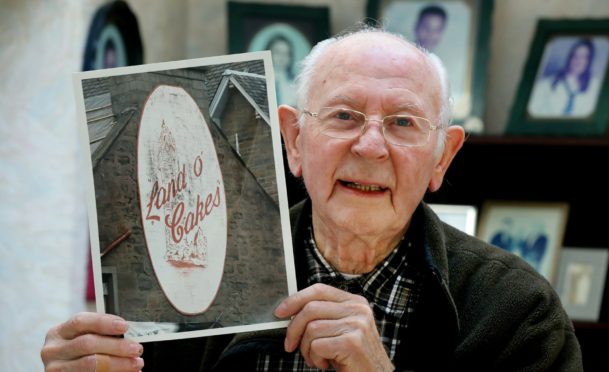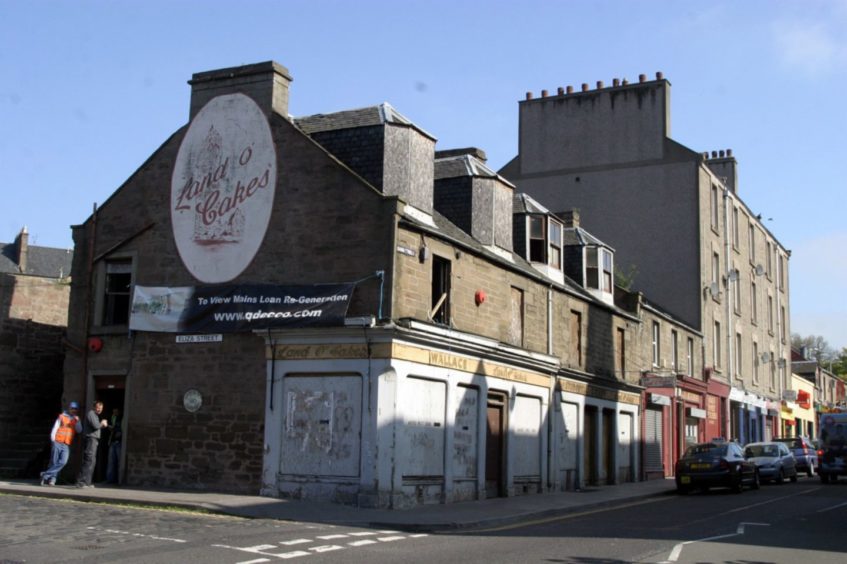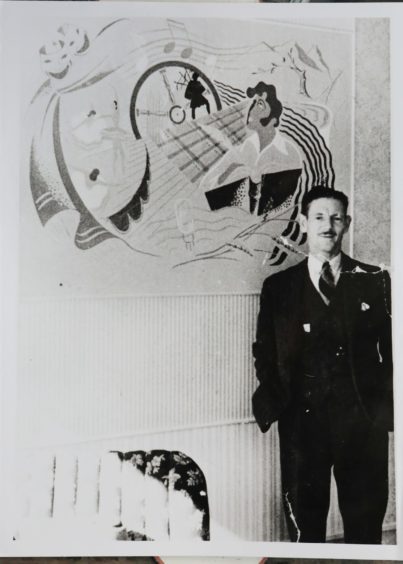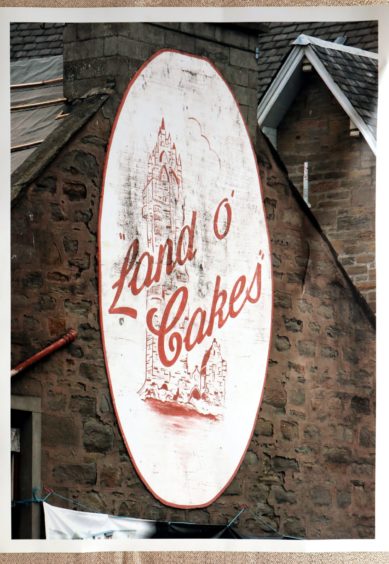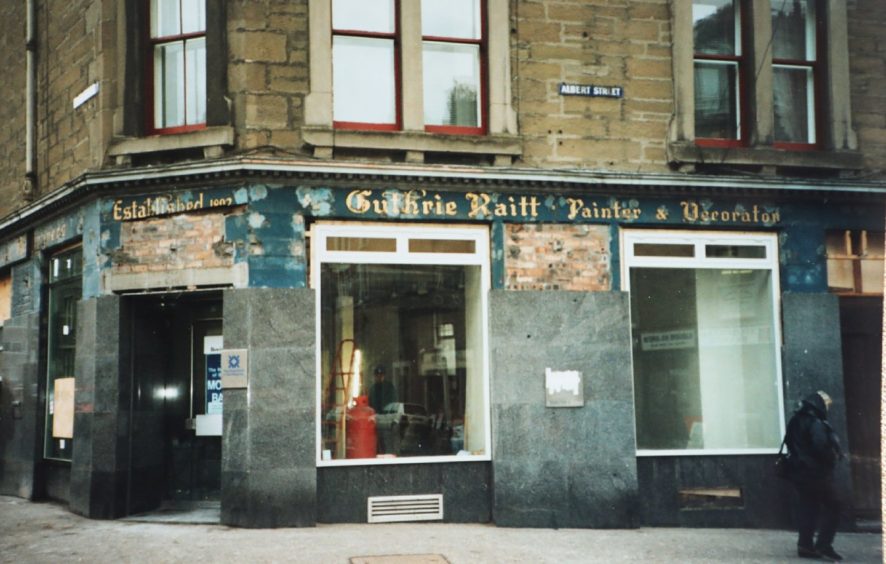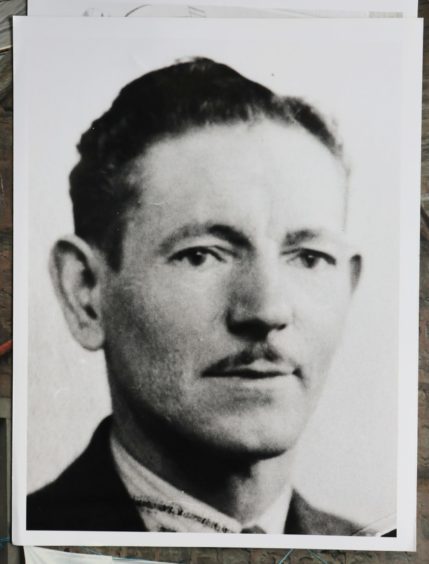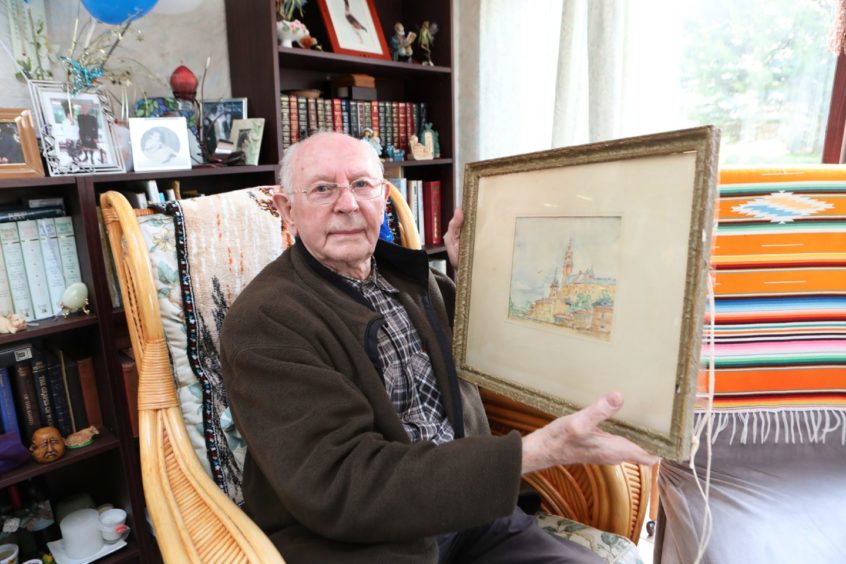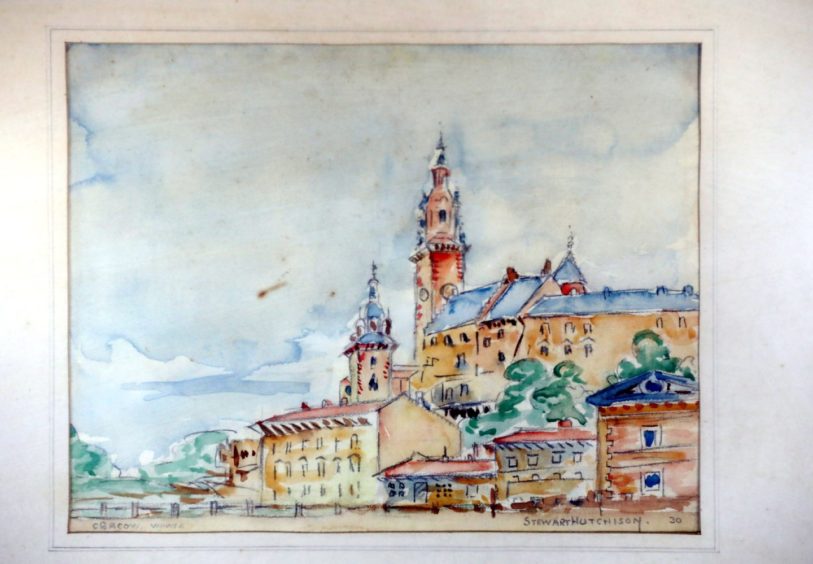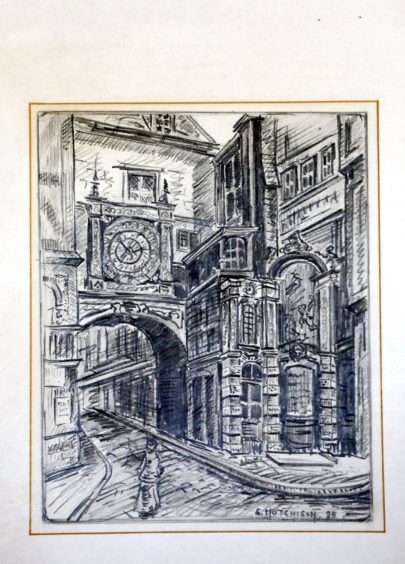Traditional signwriter Stewart Hutchison left his creative mark on many shops and pubs in Dundee during his illustrious career.
Stewart’s work is etched into the very fabric of the city including the famous Land o’ Cakes mural on the gable wall of the old Wallace’s bakery on Dura Street.
For decades the sign has been one of Dundee’s most famous landmarks and a nod to past times long after the bakery closed down.
Stewart was a skilled artist who could paint in reverse
Little has been known about the man who painted the mural until now.
But Stewart’s work was not just limited to buildings as he was also called upon for other projects from ice cream vans to lorries and even boats.
He could paint signage in reverse on glass and was also a skilled artist.
Stewart sketched from an early age and some of his paintings of street scenes in watercolours still adorn the walls of family members and others to this day.
Stewart learned his craft after the Second World War at a golden age in a time when there were painted signs everywhere in Dundee.
Sadly the original methods of setting out and sketching letters by hand is now rarely done after being written off as an archaic trade of the past.
Instead of painstakingly painting each detail, signs can now be made of vinyl and stuck onto wherever they’re needed.
The new technology hollowed out the industry in the 1980s and 1990s.
Stewart would mark the centre line and snap in chalk lines for the top and bottom of the main lettering before getting to work with his paint brush.
Stewart was a decorated war hero
Born in 1908 in Caldrum Street, Stewart was the oldest of six children and the family suffered tragedy with the deaths of two of his sisters.
Florence was just a year old when she died and Susan later passed away aged 31 in India where jute workers from Dundee moved for a better life.
Stewart started work as a painter and decorator and got married to Christina Farquharson in 1930.
He went on to serve with the Royal Navy during World War Two as a gunner.
He was decorated in recognition of service with the 1939-45 Star, Atlantic Star, Africa Star, Pacific Star, Italy Star and the War Medal 1939-45.
During his service in India he visited Susan’s grave in the Scottish Cemetery of Calcutta where more than 3,000 Scots still lie among the tombs.
Stewart returned to Dundee after the guns fell silent and worked with painter and decorator Guthrie Raitt in Albert Street.
He developed a skill for sign writing and started his own business which was very successful and he found himself in demand for his work.
The fading remains of Stewart’s sign work can still be seen on the walls of old buildings including Wallace’s Land o’ Cakes at the corner of Eliza Street and Dura Street.
Stewart was still working shortly before his death
He kept working after his retiral and was still doing the odd favour for a friend or a family member up until his death at the age of 82 in 1991.
Stewart enjoyed a pint on a Friday, watching Dundee FC, and was a family man and enjoyed spending time with children Bisset, Jack, Stewart and Christina.
Bisset said: “The traditional art of signwriting is in danger of dying out.
“I think it’s important that people know who painted the Wallace’s Land o’ Cakes mural because when we’re long gone that knowledge will go with us.
“People often ask about the sign because it is so well-known and I think it’s important for his work to be recognised 30 years after his death.
“It was amazing to watch my father at work because he was so quick and accurate and his signwriting was history in the making.”
The preservation and interpretation of historic painted wall signs like Wallace’s Land o’ Cakes present many challenges for preservation planners because these signs often endured longer than the businesses and products they promoted.
Stewart’s son Jack said his father was at complete ease whatever the job and the family are proud of the part he played in painting the city’s heritage.
“These signs sometimes became landmarks in themselves,” he said.
“The Wallace’s Land o’ Cakes sign is a prime example of that.
“He brought a splash of colour and creativity to his work and would write signs for pubs, cafes, restaurants, traders, boats, ice cream vans and lorries.”
Iain Flett from the Friends of Dundee City Archives said: “The Wallace’s Land o’ Cakes gable end sign at Eliza Street is one that I used to enjoy daily when I walked home to my flat in Stobswell after a pescatarian purchase from Dora’s.
“It looks deceptively simple but took a lot of skill to create.
“Firstly, like scenery in theatre productions, it had to look crisp from a distance, which means that the artist had to use techniques such as scumbling and spattering for that distance visual effect.
“The skill to enhance a distance visual effect was also used by the Dundee woodcarvers who used to carve ships’ figureheads and was a skill that was lost in the 19th century.
“The calligraphy of creating the letters was another skill and when I came to Dundee in 1976 there were still painters who would add the final touch of painting a tenement close number after a close refurb.
Difficult work to produce the famous Land o’ Cakes sign
“What sounds like a simple job wasn’t – they would quietly with gilding and paint create a number that would be distinctive, artistic and would weather decades of Scottish rain and wind.
“The scaling and angle of the lettering of Wallace’s Land o’ Cakes had to be a difficult challenge.
“Whereas nowadays sign ‘writing’ is a matter of sign making of acrylic signs, vinyl signs, printed signs, neon signs, digital displays, all produced on an enormous scale with modern machinery, it is rare to find an artist who can sketch out and paint by hand lettered signs.
“There are still a few who continue the tradition on shop fronts and on vehicles and readers should pause to appreciate these when they spot them.
“Refurbishments can uncover great examples of the signwriter’s art – one of these is to the left of Pandora’s jewellery shop in High Street, where it was decided to leave the Victorian departmental signage, together with pointing hands, when decorators rediscovered it.
“The artistic decoration of gable ends, already a tradition in Glasgow, can now be found in Dundee, such as the crowdfunded artwork, Power in Vulnerability, on a gable end in Tay Street Lane by Kirsty Whiten and The Fandangoe Kid – a powerful piece themed around loss, death and grief.
“We look forward to more of this public art which will continue in its own way the scenic skills of the signwriters of the past.”
